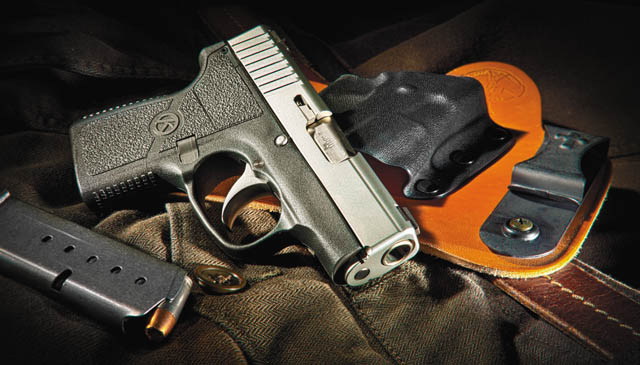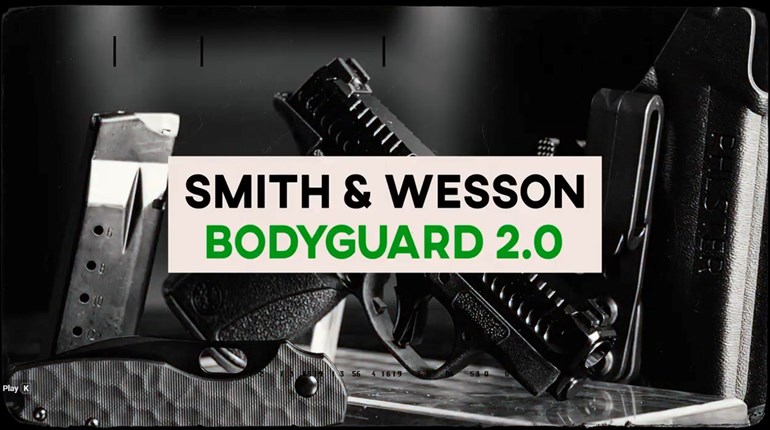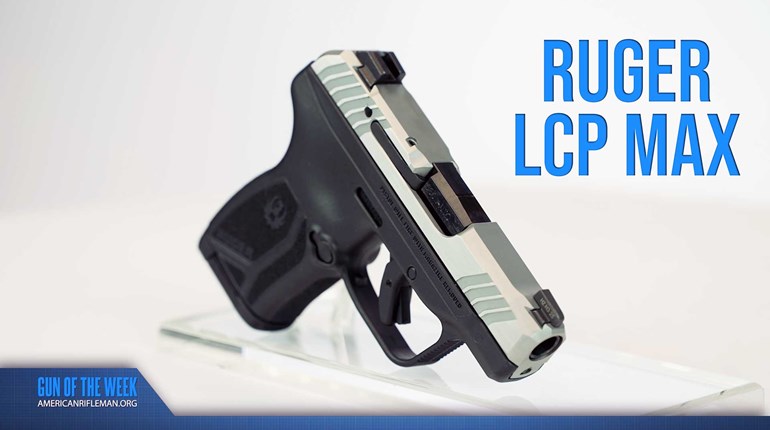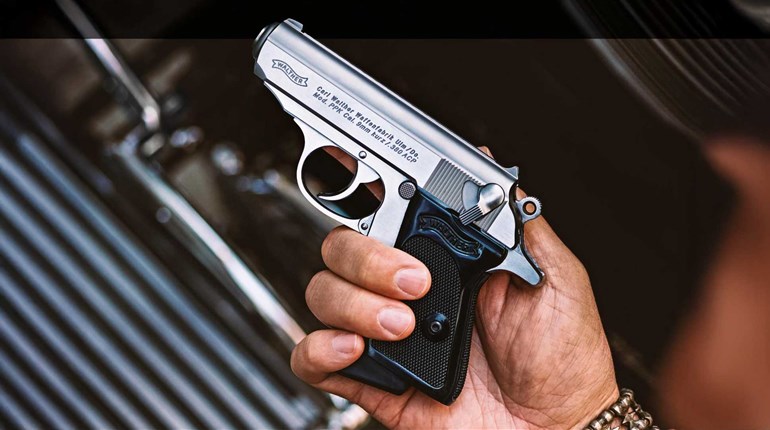
The incredible popularity of pistols chambered for the .380 ACP cartridge shouldn't continue to surprise me—yet it does. That comment is not a criticism of either gun or cartridge, but rather a measure of respect for the remarkable comeback of both after decades languishing from lack of interest among American shooters.
Across the pond, small pistols chambered in .380 ACP have long had a following. In fact, I believe Ian Fleming, in one of his early James Bond novels, made a reference to the .380 being a powerhouse cartridge when 007 traded his Beretta .32 ACP for a Walther in .380. Both German and Italian pistols were chambered for the round before and during World War II. Americans, however, tended to stifle a yawn when presented with these handguns, except for a relatively small group of shooters concerned with World War II or pre-war European souvenirs. For much of the 20th century, America had a predominantly revolver culture, and our military semi-automatic was the M1911. Even when we began to embrace semi-autos, our interests focused on large pistols chambered in larger calibers.
During Kahr's rather short history, the company has earned a healthy share of the compact semi-automatic market and great respect from the shooting community. Its locked-breech pistols in several chamberings from 9 mm to .45 ACP show close attention to quality control, and judging from sales and the company's growth, this has been noticed and appreciated. Now Kahr has turned its attention to the .380 ACP market, and since its forte has always been compact, concealable pistols, one would expect success.
Yet, there were a couple of factors that made this venture more difficult than it had to be. First, Kahr stayed with the locked-breech design used in its larger-caliber semi-autos rather than going to the simpler (and less expensive) blowback action of most .380 ACP pistols. Second, the company decided it would make a .380 compliant with California laws to take advantage of the sales potential in that heavily populated state. And make no mistake; while California is referred to as "the land of fruits and nuts" by some of my shooting friends, based on the anti-gun actions of its lawmakers, there are more serious shooters in California than there are people in other states.

Kahr's resultant P380 is impressive both in looks and performance. With a stainless steel slide and a black-polymer frame, the little .380 weighs less than 10 ounces sans magazine. More important criteria in defining a compact pistol are its dimensions, and the Kahr P380 is slightly less than 5 inches long, just under 4 inches in height and a mere .75 inch wide. This ultra-compact holds six rounds in the magazine and one more in the chamber.
The sides of the P380's polymer frame have a pebbly texture, providing a slightly sticky feel without being overly aggressive. Serrations molded into the front and backstraps are considerably more aggressive, and strips raised at 90 degrees to the serrations result in a pattern of tiny squares sticking out from the frame's surface, preventing slippage. Granted, the .380 ACP's recoil is not overwhelming, but the end result of this treatment is excellent control during firing.
Ideal for right-handed shooters, the magazine-release button is located at the bottom rear of the trigger guard on the left side. When I fully depressed the button, the magazine sprang happily from the frame, but I had to change my grip to apply adequate pressure. I have to do this with all small semi-autos, so I'm not knocking the P380. Quite the contrary, positive magazine retention is much better than a loose release system that may drop the magazine before you intended. Keep in mind the gun has a magazine disconnect preventing you from firing it with the magazine removed.
The P380 has two recoil springs around a hollow guide rod. This nested system ensures reliability in semi-autos with very short slide travel. It works—there were no stutters with any ammo during shooting sessions. The hollow guide rod saves weight without giving up any necessary structural strength.
The Kahr's trigger pull is superior to other .380 semi-autos I've tested. After the initial take-up, it's smooth and consistent, allowing the shooter to maintain a good sight picture throughout. The inside of the trigger guard is large and smooth enough for my finger to travel through the entire pull with no rubbing against the bottom of the guard.
Like other semi-autos, the P380 uses what is called a "trigger cocking" system. The gun is half-cocked by the cycling slide. Pulling the trigger clears the firing pin's spring-loaded safety block, takes the gun from half-cock to full-cock and fires the round. Trigger pull weight for the P380 I tested was less than 5 pounds, which I consider remarkable.
While these features have been approved by California in other semi-autos, the state also requires a loaded-chamber indicator that is visible and engraved with large letters. The compliant L-shaped steel bar in the top of the slide, just behind the chamber, is pinned in place, and the front end is pushed upward when a round is chambered. On the bar near the chamber, you can see the word "INDICATOR." Engraved into the top of the slide between the indicator bar and the rear sight are the words, "WARNING! LOADED WHEN INDICATOR IS UP." Yes, all letters are capitalized, and yes, there is an exclamation point. Does the indicator indicate when the gun is loaded? Well, it tells you there is a case in the chamber, but not whether it's a live round. One good feature of the indicator is it necessitates larger, more visible sights on the pistol, and that's a good thing.
The P380's front and rear sights are dovetailed in the slide and can be drifted for windage. Best of all, the sight picture is extremely crisp—almost bullseye-shooting quality. The straight-sided, flat-top front blade is large for a .380 pistol and fits perfectly in the generous, straight-sided rear sight notch. A crisp sight picture and a controlled trigger press: the two main ingredients of executing a good shot. This is a pocket pistol that lends itself to precision shots at distances beyond powder-burn ranges.
There is a white dot on the front blade, which doesn't affect precise sight alignment in daylight conditions, but it does make the front sight more visible when the light dims and vermin venture forth. A white bar at the base of the notch on the rear blade allows a white-on-white alignment for a bit more precision when light conditions don't permit target-sight clarity. The bar-dot system helped me place accurate shots when I tried it on a dimly lit indoor range, but it required more concentration on the rear sight than advisable in a confrontation. When I deliberately tried shooting faster, my attention was on the front sight's dot, and I did not really notice the rear's white bar. Whether or not you prefer a reference point on your rear sight, the P380's sights are better than I've seen on any other .380 ACP pistol. The downside of sights this large on a pocket pistol is the possibility of snagging on clothing during the draw, but that problem is largely solved by a pocket holster.
The Kahr P380 has natural pointing characteristics beyond other small .380s. Once I established my grip on the gun, it pointed where I looked when brought to eye level. Combined with the sights, this made good hits come fast and easy.
You will want to buy extra magazines because the Kahr ships with just one. The orange "magazine" included with the gun is actually a disassembly tool. Like some other semi-autos, the P380's trigger must be pulled during takedown. You'll need a magazine in the gun in order to do so, and the dummy is superior for that purpose.
Kahr's P380 is an excellent self-defense pocket pistol, and while a bit pricey at more than $700, its quality lives up to Kahr's standards. Thanks, guys, for the extra effort to make it available to us West Coast fruits and nuts!






































